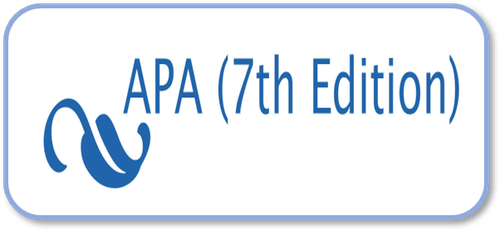Job Satisfaction of Non-Permanent Teachers in South Nias Amid Limitation
DOI:
https://doi.org/10.24912/jm.v24i2.646Abstract
Teachers in South Nias still adhere to their culture and customs. They really hope that they are given the opportunity to get permission to attend indigenous cultural and cultural events as part ofbalancing work and life.Most of the teachers in South Nias only have the status of non-permanent teachers, or volunteers, but they are very proud of being teachers even with a small salary. Participants in this study were 46 junior highpublic school teachers in remote villages. Data were analyzed by Partial Least Square method to test the mediation effect to determine the effect of exogenous constructs with endogenous constructs through mediating variables. The result showed that work life balance had a positive and significant influence on self-esteem and job satisfaction. Self-esteem has a positive and significant influence on job satisfaction. Moreover, the total effect of work life balance on job satisfaction increases after mediated by self-esteem.
References
Adler, A., and Seligman, M. E. P. (2016). Using Wellbeing For Public Policy: Theory, Measurement, And Recommendations. International Journal of Wellbeing, 6, 1–35. http://doi.org/10.5502/ijw.v6i1.1.
Baumeister, R. F., Campbell, J. D., Krueger, J. I., and Vohs, K. D. (2003). DOES HIGH SELF-ESTEEM CAUSE BETTER PERFORMANCE ,INTERPERSONAL SUCCESS, HAPPINESS, OR HEALTHIER LIFESTYLES? Psychological Science In The Public Interest, 4(1), 1–44.
Belias, D., Koustelios, A., Vairaktarakis, G., and Sdrolias, L. (2015). Organizational Culture and Job Satisfaction of Greek Banking Institutions. Procedia - Social and Behavioral Sciences, 175, 314–323. http://doi.org/10.1016/j.sbspro.2015.01.1206.
Bevelander, K. E., Anschu, D. J., Creemers, D. H. M., Marloes, K., and Engels, R. C. M. E. (2017). The Role of Explicit and Implicit Self-Esteem in Peer Modeling of Palatable Food Intake : A Study on Social Media Interaction among Youngsters. PLoS ONE, 8(8). http://doi.org/10.1371/journal.pone.0072481.
Bosson, J. K., Brown, R. P., Zeigler-hill, V., and Swann, W. B. (2003). Self-Enhancement Tendencies Among People With High Explicit Self-Esteem : The Moderating Role of Implicit Self-Esteem. Self and Identity, 2, 169–187. http://doi.org/10.1080/15298860390208801.
Caramelli, M., and Briole, A. (2007). Employee stock ownership and job attitudes: Does culture matter? Human Resource Management Review, 17, 290–304. http://doi.org/10.1016/j.hrmr.2007.07.002.
Çevik, G. B. (2017). The Roles of Life Satisfaction, Teaching Efficacy, and Self-esteem in Predicting Teachers â€TM Job Satisfaction. Universal Journal of Educational Research, 5(3), 338–346. http://doi.org/10.13189/ujer.2017.050306.
Chen, L. (2008). Job satisfaction among information system ( IS ) personnel. Computers in Human Behavior, 24, 105–118. http://doi.org/10.1016/j.chb.2007.01.012.
Cleare, L. (2013). Personality as a Predictor of Job Satisfaction : Study of the Relationship between Personality and Job Satisfaction amongst Workers in the Bahamas. Journal of Management Research, 5(3), 200–229. http://doi.org/10.5296/jmr.v5i3.3936.
Cookson, C. (2016). The Role of Work-Life Balance Programs in Job Satisfaction. Walden University. Retrieved from http://scholarworks.waldenu.edu/dissertations.
Darcy, C., Mccarthy, A., Hill, J., and Grady, G. (2012). Work – life balance : One size fits all ? An exploratory analysis of the differential effects of career stage. Europan Management Journal, 30, 111–120. http://doi.org/10.1016/j.emj.2011.11.001.
Downes, C., and Koekemoer, E. (2011). Work – life balance policies : Challenges and benefits associated with implementing flexitime. SA Journal of Human Resource Management, 9(1), 1–13. http://doi.org/10.4102/sajhrm.v9i1.382.
Duha, T. (2018). Lecturer Job Satisfaction Affected By Discipline And Motivation Mediated By Organizational Commitment. Journal of Applied Management (JAM), 16(2), 300–308. http://doi.org/http://dx.doi.org/10.21776/ub.jam.2018.016.02.13.
Embse, N. P. Von Der, Ph, D., Sandilos, L. E., Ph, D., Pendergast, L., Ph, D., … Ed, M. (2016a). Teacher stress , teaching-ef fi cacy , and job satisfaction in response to test-based educational accountability policies. Learning and Individuals Diffrences, 1–10. Retrieved from http://dx.doi.org/10/.1016/j.lindif.2016.08.001.
Embse, N. P. Von Der, Ph, D., Sandilos, L. E., Ph, D., Pendergast, L., Ph, D., … Ed, M. (2016b). Teacher stress , teaching-effi cacy , and job satisfaction in response to test-based educational accountability policies. Learning and Individuals Diffrences, 1–10. http://doi.org/http://dx.doi.org/10.1016/j.lindif.2016.08.001.
Fisher, K., and Layte, R. (2002). Measuring Work-Life Balance and Degrees of Sociabilty: A Focus on The Value of Time Use Data in The Assessment of Quality of Life’, EPAG Working Paper 2002-32. Colchester.
Fritz, C., Ellis, A. M., Demsky, C. A., Lin, B. C., and Guros, F. (2013). Embracing work breaks : Recovering from work stress. Organizational Dynamics, 42, 274–280. http://doi.org/http://dx.doi.org/10.1016/j.orgdyn.2013.07.005.
Galanou, C., Galanakis, M., Alexopoulos, E., and Darviri, C. (2014). Rosenberg Self-Esteem Scale Greek Validation on Student Sample. Psychology, 5, 819–827. http://doi.org/http://dx.doi.org/10.4236/psych.2014.58093.
Grace, D. L., Joseph, B. Y. M., Anusorn, S., and Lucianetti, L. (2015). The Effects of Explicit and Implicit Ethics Institutionalization on Employee Life Satisfaction and Happiness : The Mediating Effects of Employee Experiences in Work Life and Moderating Effects of Work – Family Life Conflict. J Bus Ethics. http://doi.org/10.1007/s10551-015-2984-7.
Hahn, V. C., Binnewies, C., and Haun, S. (2011). The Role Of Partners For Employees €TMRecovery During The Weekend. Journal of Vocational Behavior, 80, 288–298. http://doi.org/10.1016/j.jvb.2011.12.004.
Hayman, J. (2005). Psychometric Assessment of an Instrument Designed to Measure Work Life Balance. Research and Practice in Human Resource Management, 13(1), 85–91.
Holly, S., and Mohnen, A. (2012). Impact of working hours on work–life balance. (J. Schupp & G. G. Wagner, Eds.). BErlin: German Socio-Economic Panel Study (SOEP) at DIW Berlin. Retrieved from http://www.diw.de/soeppapers.
Judge, T. A., and Bono, J. E. (2001). Relationship of Core Self-Evaluations Traits — Self-Esteem , Generalized Self-Efficacy , Locus of Control , and Emotional Stability — With Job Satisfaction and Job Performance : A Meta-Analysis. Journal of Applied Psychology, 86(1), 80–92. http://doi.org/10.1037//0021-9010.86.1.80.
Kanning, U. P., and Hill, A. (2012). Organization-based self-esteem scale – adaptation in an international context. Journal of Bussiness and Media Psychology, 3(1), 13–21. Retrieved from www.journal-bmp.de.
Kaur, B. (2012). Equity And Social Justice In Teaching And Teacher Education q, 28, 485–492. http://doi.org/10.1016/j.tate.2012.01.012.
Kim, H. K. (2014). Work- Life Balance and Employees ’ Performance : The Mediating Role of Affective Commitment. Global Business and Management Research: An International Journal, 6(1), 37–51.
Klein, N. (2016). Prosocial behavior increases perceptions of meaning in life. The Journal of Positive Psychology, 1–8. http://doi.org/10.1080/17439760.2016.1209541.
Lapierre, L. M., Spector, P. E., Allen, T. D., Poelmans, S., Cooper, C. L., Driscoll, M. P. O., … Kinnunen, U. (2008). Family-supportive organization perceptions , multiple dimensions of work – family conflict , and employee satisfaction : A test of model across five samples q. Journal of Vocational Behavior, 73, 92–106. http://doi.org/10.1016/j.jvb.2008.02.001.
Lent, R. W., Nota, L., Soresi, S., Ginevra, M. C., Duffy, R. D., and Brown, S. D. (2011). Predicting the job and life satisfaction of Italian teachers : Test of a social cognitive model. Journal of Vocational Behavior, 79, 91–97. http://doi.org/10.1016/j.jvb.2010.12.006.
Mannarini, S. (2010). Assessing The Rosenberg Self-Esteem Scale Dimensionality And Items Functioning In Relation To Self-Efficacy And Attachment Styles.TPM, 17(4), 229–242.
Martins, H., and Proença, T. (2012). Minnesota Satisfaction Questionnaire-Psychometric Properties and Validation in a Population of Portuguese Hospital Workers. Research Work in Progress. Retrieved from http://wps.fep.up.pt/wplist.php.
Mccarthy, A., Darcy, C., and Grady, G. (2010). Work-life balance policy and practice: Understanding line manager attitudes and behaviors. Human Resource Management Review, 20(2), 158–167. http://doi.org/10.1016/j.hrmr.2009.12.001.
Mellner, C. (2014). Boundary Management Preferences, Boundary Control, and Work-Life Balance among Full-Time Employed Professionals in Knowledge-Intensive, Flexible Work. Nordic Journal of Working Life Studies, 4(4).
Nalavany, B. A., Carawan, L. W., and Brown, L. J. (2011). Considering the role of traditional and specialist schools : do school experiences impact the emotional well-being and self-esteem of adults with dyslexia ? British Journal of Special Education, 38(4), 191–200. http://doi.org/10.1111/j.1467-8578.2011.00523.x.
Neff, K. D. (2011a). Self-Compassion, Self-Esteem, and Well-Being. Social and Personality Psychology Compass, 5(1), 1–12.
Neff, K. D. (2011b). Self-Compassion, Self-Esteem, and Well-Being, 1, 1–12.
Nord, W. R., Fox, S., Phoenix, A., and Viano, K. (2002). Real-World Reactions to Work-Life Lessons for Effective Implementation. Organizational Dynamics, 30(3).
Orth, U., and Robins, R. W. (2014). The Development of Self-Esteem. Current Direction in Psychological Science, 23(5), 381–387. http://doi.org/10.1177/0963721414547414.
Pamatang, C., Sianipar, M., and Yudoko, G. (2013). Community empowerment through appropriate technology : sustaining the sustainable development (The 3 rd International Conference on Sustainable Future for Human Security Suistain 2012). Procedia Environmental Sciences, 17, 1007–1016. http://doi.org/10.1016/j.proenv.2013.02.120.
Peake, E. (2000). Tradition , Christianity , And The State In Understandings Of Sickness And Healing In South Nias , Indonesia by Edward Peake Thesis submitted for degree of PhD Department of Anthropology. London School of Economics, University of London.
Reilly, Eithne, Dhingra, Boduszek, K. and, and Daniel. (2014). Teachers’ Self-efficacy Beliefs, Self-esteem, and Job Stress as Determinants of Job Satisfaction. International Journal of Educational Management, 28(4), 365–378. Retrieved from http://eprints.hud.ac.uk/18985/.
Richardson, F. W. (2014). Enhancing Strategies to Improve Workplace Performance. Walden University. Retrieved from http://scholarworks.waldenu.edu/dissertations.
Roberts, K. (2013). Sociology of leisure. Sociopedia.isa, 1–13. http://doi.org/10.1177/205684601371.
Saari, L. M., and Judge, T. A. (2004). Employee Attitudes And Job Satisfaction. Human Resource Management, 43(4), 395–407. http://doi.org/10.1002/hrm.20032.
Şentuna, M. (2015). Investigation of Job Satisfaction , Organizational Commitment and Self- Esteem of Physical Education Teachers According to the Gender. International Online Journal of Educational Sciences, 7(2), 93–101. http://doi.org/http://dx.doi.org/10.15345/iojes.2015.02.005.
Smith, J., and Gardner, D. (2007). Factors Affecting Employee Use of Work-Life Balance Initiatives. New Zealand Journal of Psychology, 36(1), 1–12.
Sturges, J., and Guest, D. (2004). Work / life balance early in the career. Human Resource Management Review, 14(4), 5–20.
TNS GALLUP. (2015). JOB SATISFACTION INDEX 2015 - What drives job satisfaction? Retrieved from WWW.KRIFA.DK/INDEKS
Wigfield, A., and Cambria, J. (2010). Expectancy-Value Theory : Retrospective And Prospective. Advance in Motivation and Achievement, 16A(2010), 35–70. http://doi.org/10.1108/S0749-7423(2010)000016A005.
Yang, J., Xu, X., Chen, Y., Shi, Z., and Han, S. (2016). Trait self-esteem and neural activities related to self-evaluation and social feedback. Retrieved from www.nature.com/scientificreports/.
Yuile, Colleen, Artemis, Gudmundsson, Amanda, and Sukanlaya, S. (2012). The Role of Freiendly Policies on Employees Work-Life Balance. Journal of Management and Organisation, 18(1), 53–63. http://doi.org/http://jmo.e-contentmanagement.com/archives/vol/18/issue/1/article/4344.
Zeigler-hill, V., Chadha, S., & Osterman, L. (2008). Psychological defense and self-esteem instability : Is defense style associated with unstable self-esteem ? q. Journal of Research in Personality, 42, 348–364. http://doi.org/10.1016/j.jrp.2007.06.002.
Zeigler-hill, V., Myers, E. M., and Clark, C. B. (2010). Narcissism and self-esteem reactivity: The role of negative achievement events. Journal of Research in Personality, 44, 285–292. http://doi.org/10.1016/j.jrp.2010.02.005.
Zorlu, K. (2012). The perception of self-esteem and self-efficacy as transforming factors in the sources of role stress and job satisfaction relationship of employees : A trial of a staged model based on the artificial neural network method. African Journal of Business Management, 6(8), 3014–3025. http://doi.org/10.5897/AJBM11.2345.
Downloads
Published
How to Cite
Issue
Section
License
Copyright (c) 2020 Jurnal Manajemen

This work is licensed under a Creative Commons Attribution-NonCommercial-ShareAlike 4.0 International License.
This journal provides immediate open access to its content on the principle that making research freely available to the public supports a greater global exchange of knowledge.

This work is licensed under a Creative Commons Attribution-NonCommercial-ShareAlike 4.0 International License



















